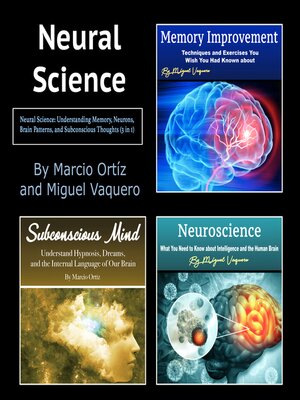Neural Science
audiobook (Unabridged) ∣ Understanding Memory, Neurons, Brain Patterns, and Subconscious Thoughts (3 in 1)
By Marcio Ortíz

Sign up to save your library
With an OverDrive account, you can save your favorite libraries for at-a-glance information about availability. Find out more about OverDrive accounts.
Find this title in Libby, the library reading app by OverDrive.



Search for a digital library with this title
Title found at these libraries:
| Loading... |
These three titles are included in this 3-in-1 bundle:
1 - The ability for the brain to encode, store, and recall information is known as memory. Experience serves as a roadmap for future action.
Memory includes both consciously recalled facts and experienced details as well as deeply embedded knowledge that pops up without thought or even awareness. It serves as both a temporary information storage space and a more lasting record of what has been learned. Scientists have identified several different types of memory, including episodic, semantic, procedural, working, sensory, and prospective memory.
From the vivid memories of episodic memory to the practical knowledge of procedural memory, each type of memory has a specific purpose.
2 - Your subconscious is a priceless potential repository of information, insight, and wisdom. But the majority of us never use that talent to its fullest.
Using hypnosis, you can access your subconscious. You can communicate with it immediately when under hypnosis. This can assist you in obtaining important knowledge and bringing about positive changes in your life.
Your subconscious is the area of your mind that generally escapes your awareness yet has a significant impact on how you live.
For instance, your subconscious has a role in controlling such essential bodily processes as breathing and heartbeat.
3 - The study of the anatomy and operation of the nervous system and the brain is known as neuroscience. To map the brain mechanistically, neuroscientists draw on cellular and molecular biology, anatomy and physiology, human behavior and cognition, and other fields.
Each neuron, or brain cell, in an adult human has an estimated 100 billion connections to other neurons.






